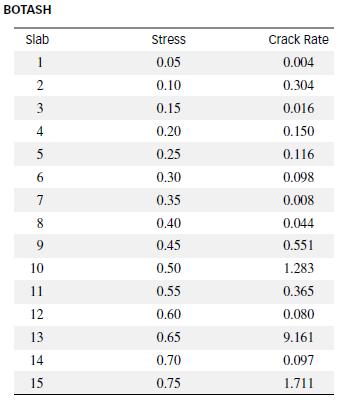A common byproduct of burning municipal solid waste is bottom ash. The use of bottom ash waste
Question:
A common byproduct of burning municipal solid waste is bottom ash. The use of bottom ash waste in the building of asphalt roads was investigated in the Journal of Civil Engineering and Construction Technology (Feb. 2013). Of particular interest was the relationship between the cracking rate of bottom ash waste asphalt and stress intensity. A mixture of bottom ash waste asphalt was prepared and 15 slabs produced. Stress intensity (number of load cycle applications per millimeter) was varied for each slab, then the cracking growth rate (millimeters per cycle) was measured. The data (simulated from information in the journal article) are listed in the table. Crack growth rate (y) was modeled as a function of stress intensity (x) using the Paris Law power function: y = axb, where a and b are unknown constants.
a. Note that if you take the natural logarithm of both sides of the equation, you obtain the expression: ln(y) ln(a) + b ln(x). This is the equation of a straight line relating log of crack growth rate to log of stress intensity. Fit this straight-line model to the data and give the least-squares prediction equation.
b. Based on the results, part a, how much would you expect the log of crack growth rate to change as the log of stress intensity increases by 1 unit?

Step by Step Answer:

Statistics For Engineering And The Sciences
ISBN: 9781498728850
6th Edition
Authors: William M. Mendenhall, Terry L. Sincich





